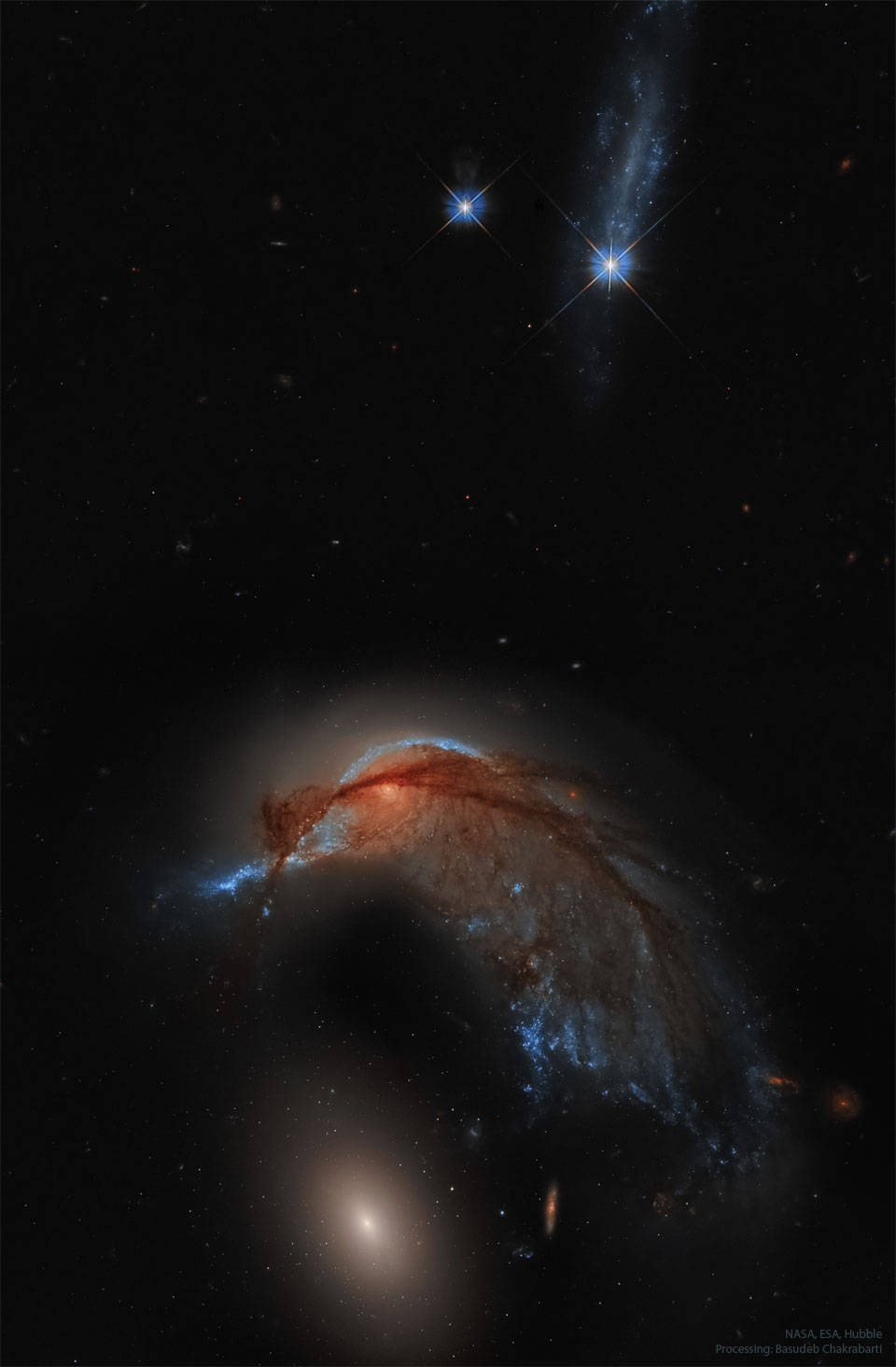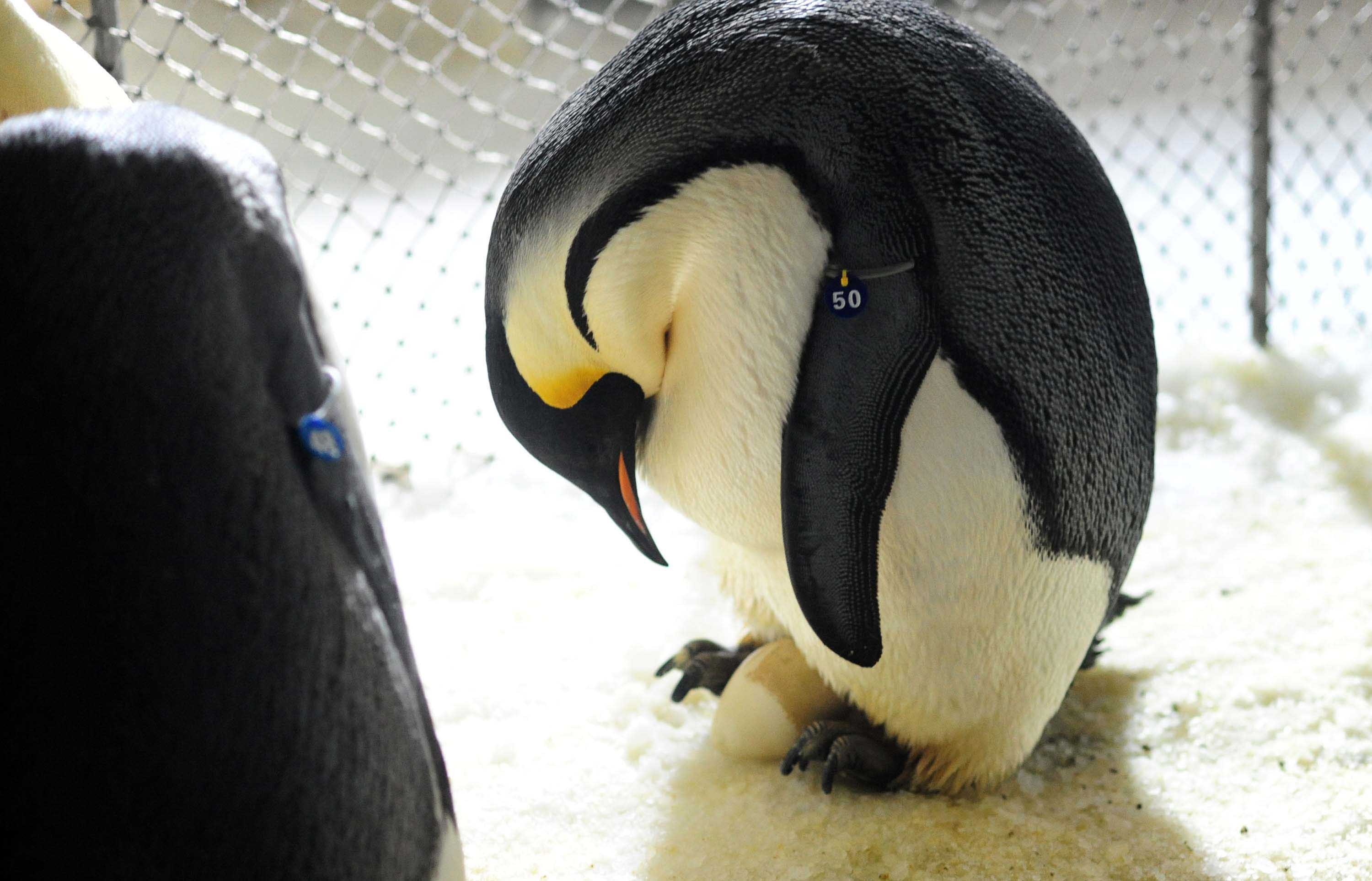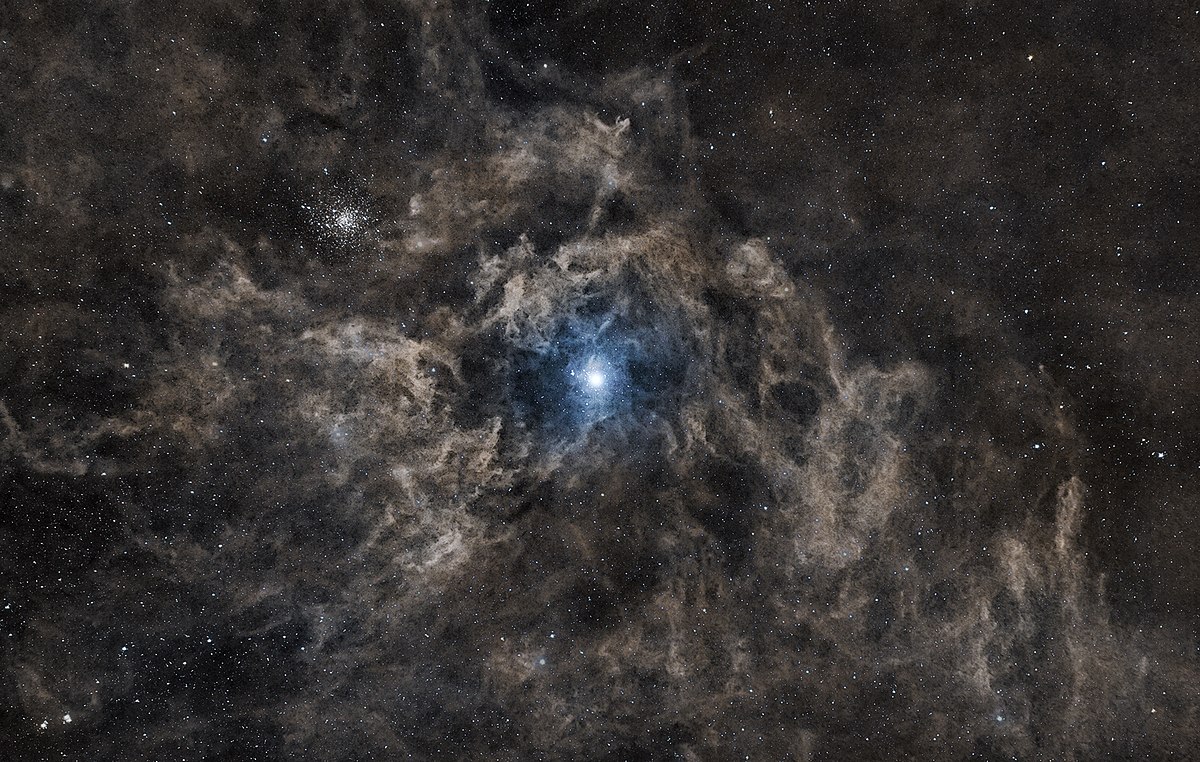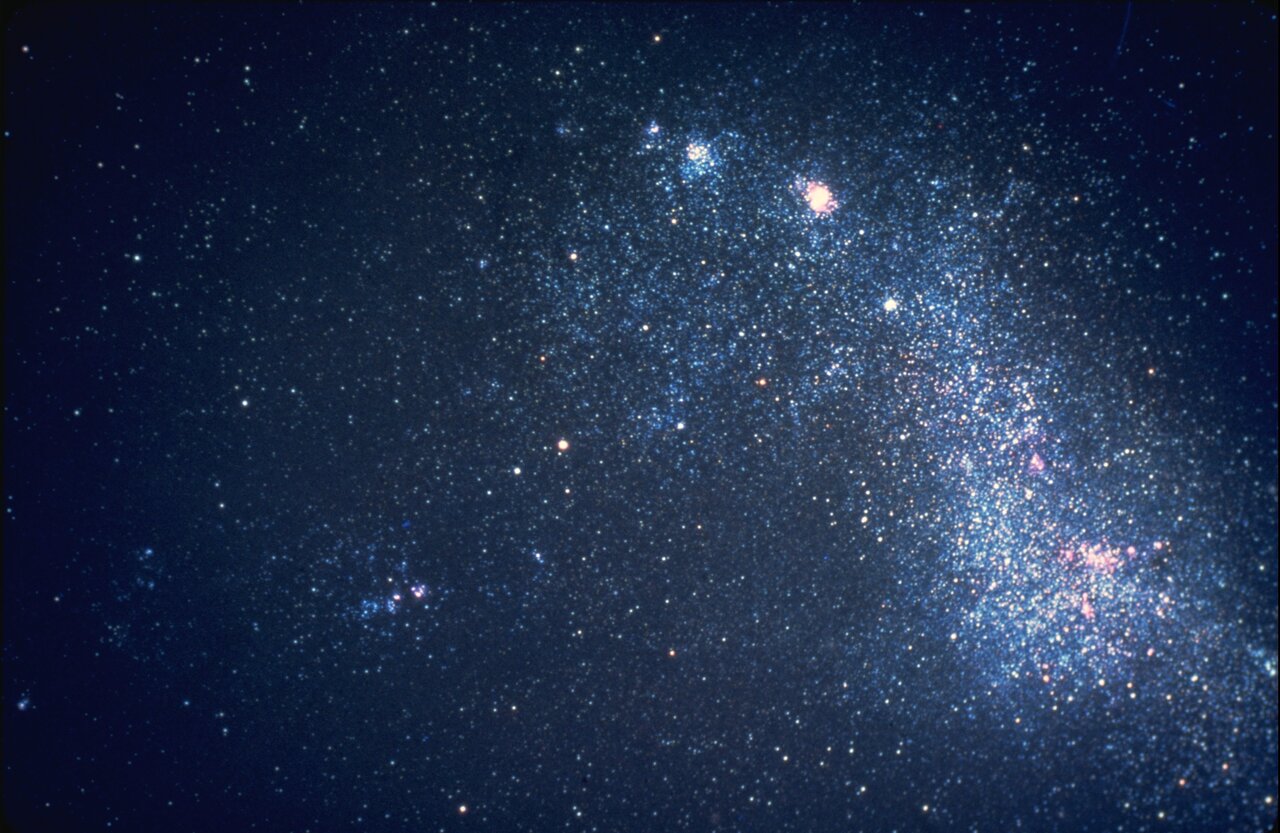AVAO wrote: ↑Tue Sep 26, 2023 6:19 pm
Ann wrote: ↑Tue Sep 26, 2023 5:14 am
AVAO wrote: ↑Tue Sep 26, 2023 4:25 am
You're right Orin.
The picture is just difficult to interpret in perspective. In reality it is probably not a hummingbird but an eagle, which from a different perspective looks similar to NGC 6872 (below). In the case of NGC 2936, the right rear arm of the galaxy is illuminated from the nucleus and therefore appears blue. The left front arm begins towards the left as a shortened blue part that rotates and continues in a brown part that stretches from left to right and therefore exactly covers the right "blue" arm behind. This brown part of the left arm is completely in transmitted light but has just as many stars as the illuminated and therefore blue appearing arm behind. However, due to the transmitted light situation, these appear "invisible" to us and we see only the brown dust filaments.
That's why I like this exciting galaxy too.
bigger: https://live.staticflickr.com/65535/529 ... 185d_k.jpg
jac berne (flickr)
Jac, you wrote:
In the case of NGC 2936, the right rear arm of the galaxy is illuminated from the nucleus and therefore appears blue.
I disagree. The blue parts of NGC 2936 are blue because they are illuminated by hot bright blue stars. You can clearly see the bright blue stars or tiny clusters peppering the blue parts of NGC 2936 and illuminating their vicinity.
The brown parts of NGC 2936 are either dust or low-mass reddish stars.
Blue stars in Arp 142 Hubble.png
Ann
ThanX Ann
OK. Of course, you are certainly right when you say that the blue parts of NGC 2936 are blue primarily because they are illuminated by hot, bright blue stars. This can also be proven very easily by imaging the galaxy in the UV. My statement is therefore wrong in itself, but my point was this: If we assume that the distribution of bright stars in both arms is approximately similar, then there must also be these brighter stars in the front arm. If this is true, it should shine similarly brightly, but it doesn't actually appear that way in the picture. The question arises as to why the front arm is immersed in brown darkness.
But I don't think, that the brown parts of the front arm only contain dust and low-mass reddish stars. There are many examples of backlit parts of galaxies where only dust filaments can be seen and the stars appear as if they have been "switched off". For me, this effect is still unclear. An explanation could be that the dust filaments in the rear part reflect the diffused galactic radiation over all, which does not happen in the front arm, so that the dust filaments appear brown and dark. Is there a better one?
Jac
Spiral galaxies aren't typically hugely symmetrical, although there are examples of galaxies that are. Like NGC 2857. But even in NGC 2857, there is more star formation in one arm than in the other:
Other galaxies show a huge difference in the amount of star formation in their arms:
So we can't just assume that both arms of a spiral galaxy will contain the same (or more or less the same) amount of star formation.
As for the reddish color of much of NGC 2936, I still believe that these parts owe their color to dust, a myriad of small reddish stars - and, mind you, the sort of processing that made "the red parts" of the galaxy look extra red. I do believe that it would have been possible to process NGC 2936 so that its "red parts" looked less reddish.
However!! I do think that "the intrinsic color" of the non-blue parts of NGC 2936 is indeed redder than the intrinsic color of NGC 2937. The difference, I believe, is due to dust reddening. NGC 2936 contains a lot of dust, and its interaction with NGC 2937 may have scattered quite a bit of that dust across the disk of NGC 2936.
Take a look at nearby NGC 4038 and NGC 4039, the Antennae Galaxies, and note how dust is scattered across the disks of them and reddening their light, particularly their yellow populations.
So, Jac, I have just edited this post, and I took away the suggestion that NGC 2936 would originally have been similar to nearby spiral galaxy M81. M81 has a massive yellow bulge, and the bulge of NGC 2936 really doesn't look remarkably big at all.
One more thing, though. You wrote:
An explanation could be that the dust filaments in the rear part reflect the diffused galactic radiation over all, which does not happen in the front arm, so that the dust filaments appear brown and dark. Is there a better one?
I'm not sure what you mean by that. But bear in m ind that the combined light from galaxies is diffuse and faint. So if you start out with diffuse, faint and scattered light, you are not going to get any sort of bright reflection nebulosity out of that.
There really
is dust in the Milky Way that reflects the combined light of our galaxy. The nebulosity it creates is called the Integrated Flux Nebula, or IFN. You can see it in this great picture of Polaris and cluster NGC 188:
But the Integrated Flux Nebula is typically quite faint. I doubt that it would affect the overall appearance of a galaxy.
As to what NGC 2936 originally would have looked like, I don't know. And as to what it would look like if we could see it from another perspective, I frankly have no idea!
Ann
 Arp 142: The Hummingbird Galaxy
Arp 142: The Hummingbird Galaxy








